You need to replace your chainsaw chain when the cutting teeth have worn down to less than 4mm. Additionally, if your chain has damaged or missing teeth, no longer effectively engages with the wood, or has met the wear markers, it’s time to replace the chain.
Btw, I’m Sam, and I have 20+ years of experience in pro-grade chainsawing 😎. In this article, I’m going to discuss – 👇
- ✅ 5 signs that tell you it’s time to replace your chainsaw chain,
- ✅ The average lifespan of a chainsaw chain,
- ✅ How to choose and replace a chainsaw chain,
- ✅ And lastly 5 PRO chainsaw chain maintenance tips.
Are you READY?
Let’s get started!
Table of Contents
ToggleWhen to Stop Sharpening a Chainsaw Chain and Replace It?
On nearly all chainsaw chains, you’ll notice a marker on the teeth that tells you when to stop sharpening a chain.
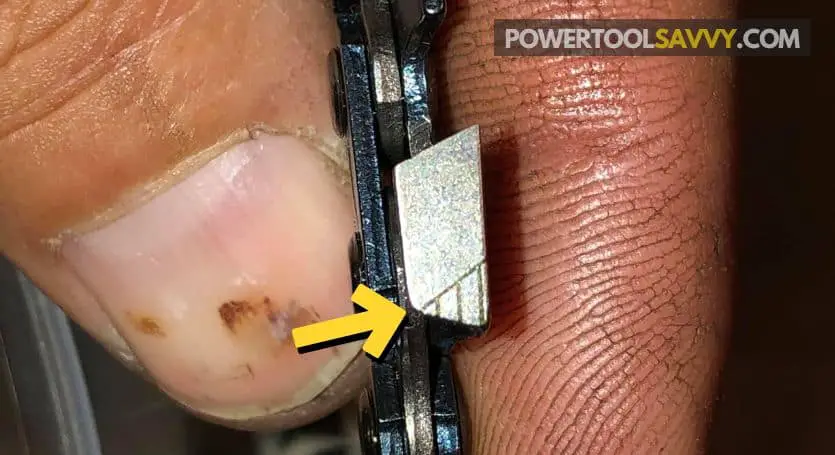
You see, each time you file the teeth on your chain, it gradually removes a bit of the metal. When the teeth wear down to the wear marker, it’s the signal that you need to get a new chain.
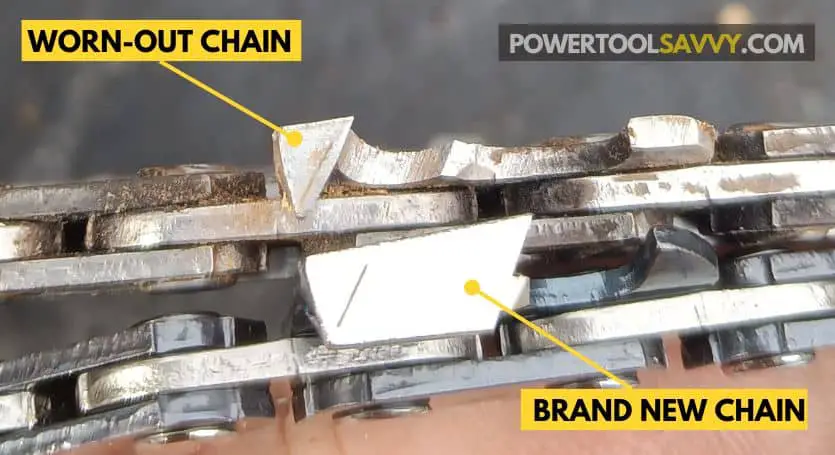
“But what if my chain has no marker?“
Well, in that case, you’ll need to keep an eye on the length of the teeth. If the teeth on your chain have worn down to less than 4mm, you should consider getting a new chain.
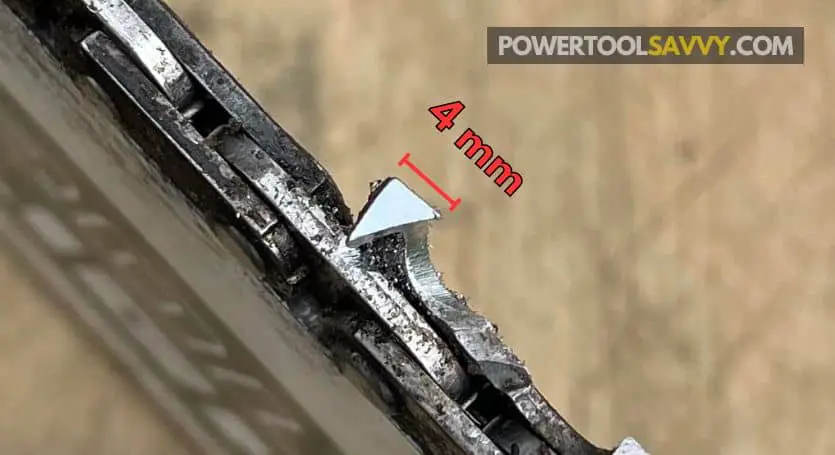
“But Sam, can’t I just keep using a chain until it’s completely worn down?“
Technically, you can. But let me caution you that at that stage, your chainsaw will cut more like it’s sandpapering and grinding through the material.
And if one of those teeth happens to break off, it might just come flying at you like a tiny metal bullet.
(Not cool, right?? 🐸)
So, do yourself a favor and replace the chain when necessary!
Related Articles: 👇
Signs of Worn Chainsaw Chain
Here are 5 signs that your chainsaw chain needs to be replaced:
- The chain has damaged or broken teeth
- The chainsaw produces fine sawdust instead of wood chips
- The chainsaw no longer pulls itself into the wood
- The chainsaw pulls in one direction, resulting in crooked cuts
- The chainsaw starts to smoke while cutting
Now let’s have a look at each of these signs in more detail. 👇
1. The Chain Has Damaged or Broken Teeth
The teeth on a chainsaw chain are responsible for the cutting, and just like human teeth, they can break or wear down over time.
If your chain is missing a few of these teeth, it won’t be able to grip and cut into the wood as effectively as it did before.
Imaging this like trying to eat a corn-on-the-cob without any teeth! 😵
Plus, it’s DANGEROUS!
A chain with broken or missing teeth could cause serious kickbacks and injure you badly.
So, when you file your chain, always inspect it closely. If you spot any damaged or missing parts, it’s time to invest in a new chain.
Related Article: 👇
2. The Chainsaw Produces Fine Sawdust Instead of Wood Chips
The teeth on a chainsaw chain are not at all like the delicate teeth of a handsaw. These teeth are purposefully designed to sink their sharp edges into the wood and remove a small piece with each pass.
(like a grizzly bear tearing into a salmon!)
The outcome?
It’s those beautiful, chunky wood chips that we all know and LOVE! ❤️🔥
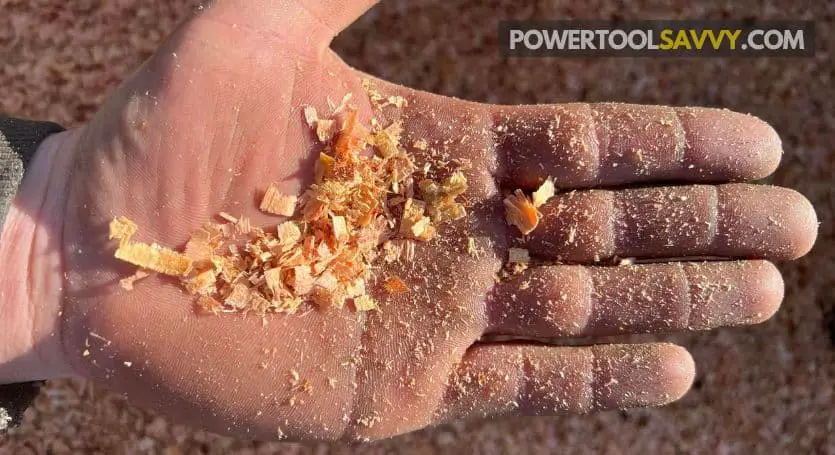
But unfortunately, as the chain wears out, it loses its capacity to produce those gorgeous wood chips. Instead, it begins expelling a large quantity of powdery sawdust.
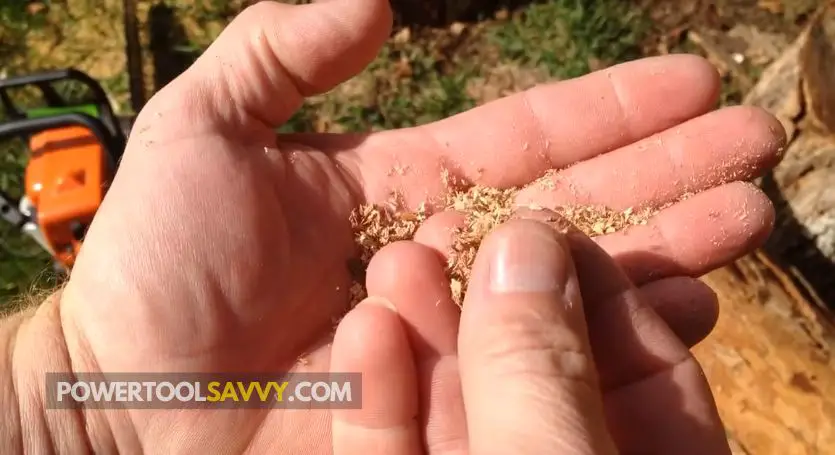
In a nutshell, if your saw is producing more fine sawdust than wood chips, it’s a clear sign that your chain is nearing the end of its life, and you should replace it asap!
3. The Chainsaw No Longer Pulls Itself Into the Wood
A chainsaw equipped with a fresh chain will eagerly dig into the wood, much like a dog pulling on a leash when it catches a whiff of a squirrel. Your job is simply to guide it.
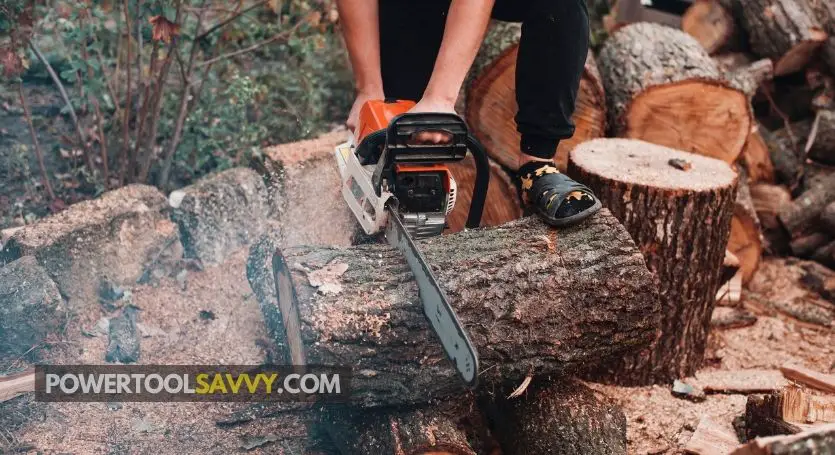
But, when the chain is worn, it won’t exhibit the same level of enthusiasm.
As a result, you’ll find yourself having to lean into the saw and exert more effort to make the cut.
So, if you feel like your saw isn’t doing its job, and you have to apply excessive force to cut through the wood, it’s likely an indicator that you need a replacement chain.
4. The Chainsaw Cuts Crooked
If your saw is producing “crooked” cuts, it’s a telltale sign that something is off with the chain.
Let me make it EASY for ya: 🙂
You see, a chainsaw with with a brand new chain always cuts in a straight line, almost like slicing through butter (unless, of course, you’re holding it wrong!).
But, as the chain undergoes wear and tear, the teeth on one side may become shorter than those on the other.
As a result, the chain starts pulling the saw in one direction, leading to uneven cuts, as illustrated in this image 👇.
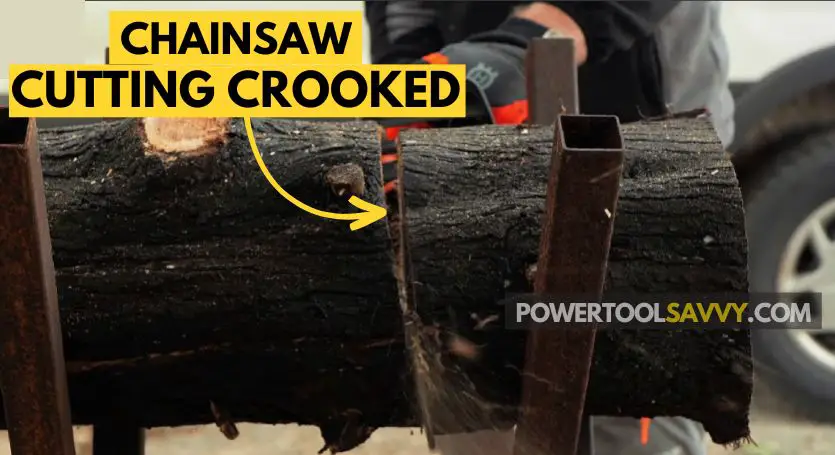
So, if your saw is making cuts that look like they were done by a drunk beaver, it’s time to replace the chain.
✍️ Note: Blunted teeth, uneven sharpness, and wrong depth-gauge setting can also lead to crooked cuts. Read this article to learn more: 👉 Why is My Chainsaw Cutting Crooked?
5. The Chainsaw Produces Excessive Smoke
If your chainsaw starts to puff out a lot of smoke when cutting (even when the oiler is working fine), it’s a sign that the chain is worn.
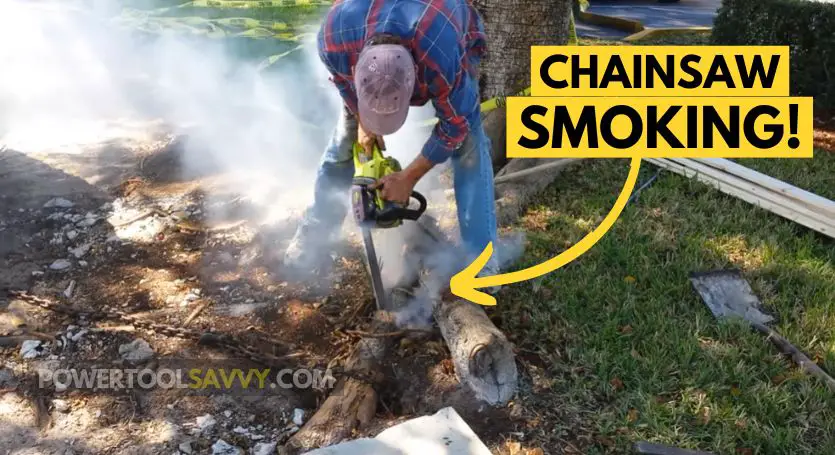
“But why is that?” 🤔
Well, it’s simple:
When a chain wears out, its teeth become smaller and less sharp, making it difficult to effectively penetrate the wood.
As a result, when the chain comes into contact with the wood, it starts to slip and grind instead of making a clean cut.
(It’s more like sanding than sawing! 😑)
And this slipping and grinding action produces a lot of smoke and friction.
So, if you’re experiencing this issue, chances are that your chain is worn-out.
Dull VS Worn-Out Chainsaw Chain (Don't SKIP!)
Some of you guys might get confused between a dull and a worn-out chain.
Well, let me make this clear to you!
A chainsaw chain is considered dull when it looses its sharpness. In such cases, the chain simply needs to be sharpened.
On the other hand, a worn-out chain is one that has reached the end of its usable life. It may have stretched, lost its original shape and strength, or even developed broken teeth.
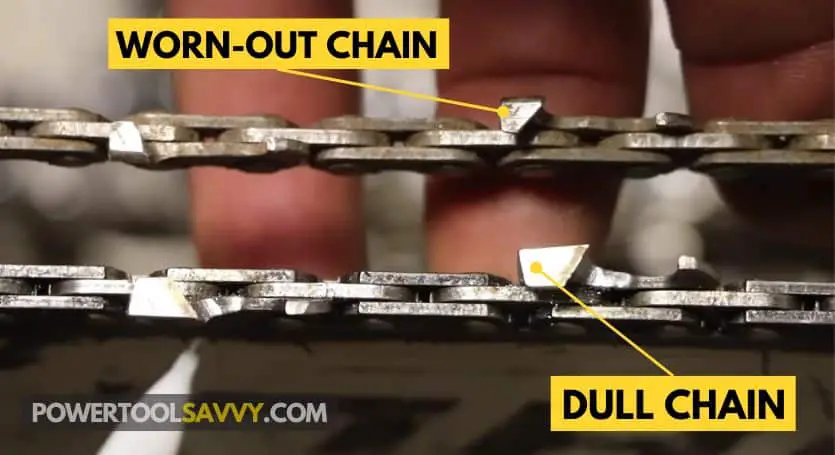
No matter how much you sharpen a worn-out chain, it won’t work. (in other words, it has become a piece of junk that needs to be replaced ASAP!)
And if you continue using a worn-out chain, it could cause serious damage to you and your saw.
To learn more, check out this article: 👉 How to Tell If a Chainsaw Chain is Dull?
How Long Do Chainsaw Chains Last?
Typically, a well-maintained chainsaw chain lasts between 1-5 years. If you’re an occasional chainsaw user and take proper care of your chain, it might even exceed the 5-year mark. But, if you’re a professional logger or tackle demanding jobs, the chain may wear out sooner.
There’re a few other factors that could affect the lifespan of a chain. For example – 👇
- ✅ How often you use your saw,
- ✅ The type of wood you usually cut,
- ✅ How well you maintain the chain,
- ✅ How frequent you sharpen the chain,
- ✅ The type and quality of the chain, and many more!
That’s why it gets a bit tricky to accurately predict how long a chainsaw chain will last.
Btw, I’ve written an entire article on this: 👉 How Long Does a Chainsaw Chain Last?
How to Choose the Right Chain for Your Chainsaw?
Chainsaw chains are not universal!
Yup, you heard that right – there’s no “one size fits all” when it comes to chainsaw chains.
(BAD LUCK! 😞)
To choose the right chain for your chainsaw, you need to know the required pitch, gauge, and the number of drive links specified for your guide bar.
Pitch: Pitch is the distance between three consecutive rivets divided by two, and it’s measured in inches; the most common pitches are 1/4″, .325″, 3/8″, and .404″.
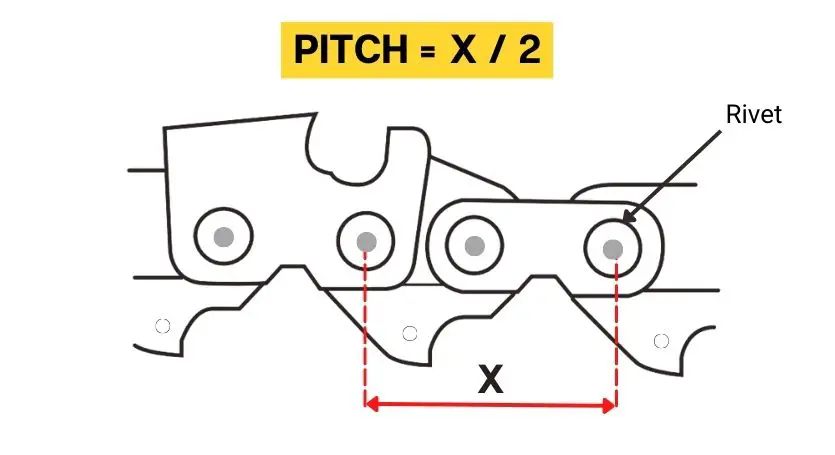
Gauge: Gauge is the thickness of the drive links, and it’s measured in inches and millimeters; the most common gauges are .043″, .050″, .058″, or .063″.
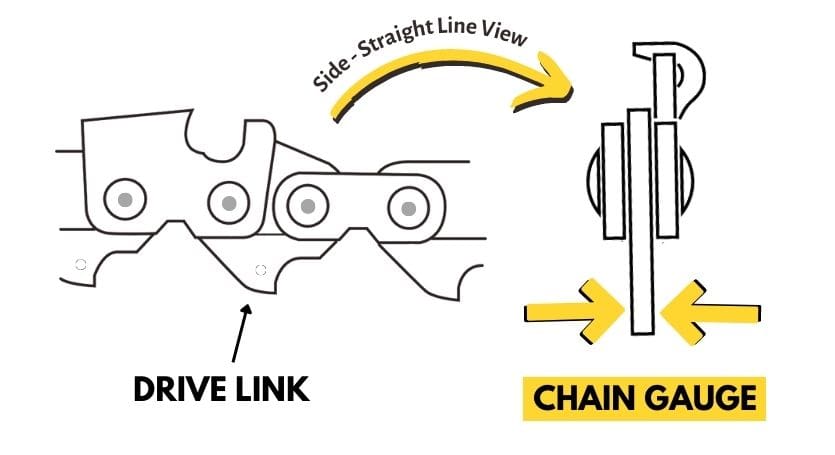
The Number of Drive Links: It determines the length of the chain. The longer your guide bar is, the more drive links you need for a proper fit.
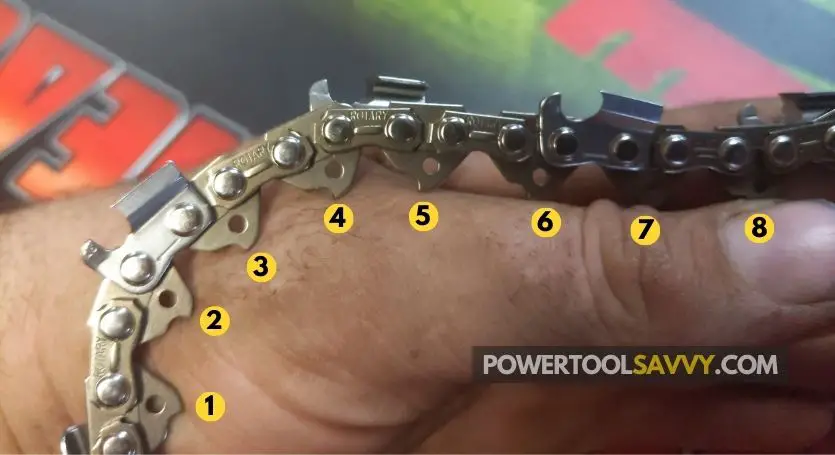
Luckily, all of this information is provided in the user manual.
Once you have gathered all these numbers, you can proceed to order the correct chain for your saw.
How to Replace a Chainsaw Chain?
Here’s a step-by-step guide to replacing your chainsaw chain:
Step 1: Make sure your saw is OFF. We don’t want any unexpected surprises!
Step 2: Loosen the chain by turning the chain tensioner counterclockwise. It’s usually located either on the front (A) or side cover (B) of the chainsaw.
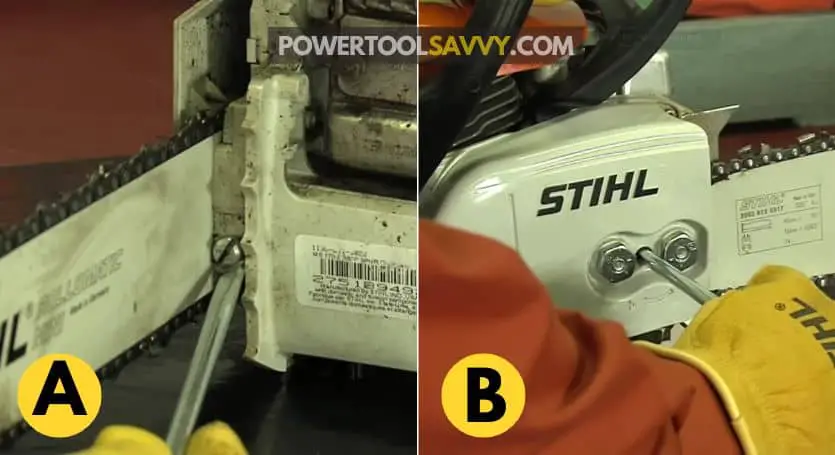
Step 3: Unscrew the bar nuts and take off the side cover.
Step 4: Remove the old chain by lifting it off the guide bar and pulling it out from the clutch drum.
Step 5: Put the new chain onto the guide bar, making sure the teeth are facing towards the tip of the bar. (Here’s the correct chainsaw chain direction!)
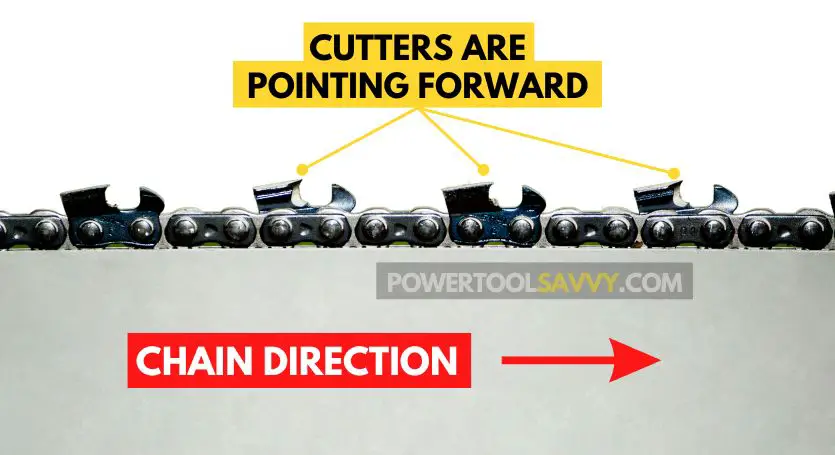
Step 6: Guide the new chain around the clutch drum, ensuring it seats properly within the grooves.
Step 7: Reattach the side cover, and secure it by screwing the nuts back on.
Step 8: Finally, adjust the chain tension by turning the tensioner clockwise until the chain is snug against the guide bar
And that’s it, your chainsaw is ready to go!
7 Chainsaw Chain Maintenance Tips
If you want to extend the lifespan of your chainsaw chain (and keep some extra money in your pocket 💸), it’s essential to take good care of it.
Here are 7 pro chainsaw chain maintenance tips:
- ✅ Always keep your chain sharp. If it becomes dull, get it sharpened. (But AVOID these 👉 10 Mistakes while sharpening the chain!)
- ✅ Keep the chain properly tensioned. If it’s too tight, you risk damaging the chain, and if it’s too loose, it won’t cut effectively. (Here’s how to tighten a chainsaw chain the RIGHT way!)
- ✅ Make sure your saw is oiling the chain properly. Otherwise, the chain may overheat and experience accelerated wear and tear. (Here’s how to fix a chainsaw that’s not oiling!)
- ✅ Avoid working in dirty or sandy conditions. Dirt and sand can act like sandpaper on the chain, wearing it down more quickly. (Learn More: 👉 Does Dirt Dull a Chainsaw Chain?)
- ✅ Avoid hitting rocks or other hard objects. This can cause the chain teeth to chip and break.
- ✅ Keep the chain clean. This helps ensure that any dirt and debris won’t build up. (I use WD-40 to clean my chain after every use)
- ✅ Store your chains in a cool, dry place. Heat and humidity can cause the chain to rust.
Follow these tips and you’ll keep your chainsaw chain spinning like new for a long, long time!
Goodbye!
That’s all I had to say!
Keep an eye out for those wear markers and don’t wait until your chain is as worn out as your grandpa’s flannel shirt.
Get yourself a new chain and show those trees who’s the BOSS! 😎
If you’ve got any chainsaw related questions, just give us a shout and we’ll be sure to answer them!
Happy sawing! 😃

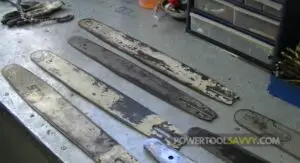
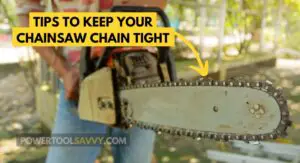
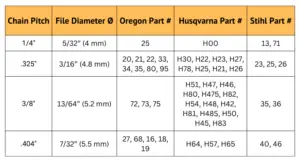
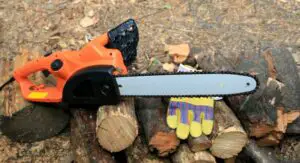

Pingback: How Often to Sharpen a Chainsaw Chain? (The BEST Practice!)
Pingback: Chainsaw Cutting Crooked? Here are 7 EASY Fixes!
Pingback: Chainsaw Burning the Wood Instead of Cutting? 5 Fixes!
Pingback: Chainsaw Not Cutting? Here are 7 EASY Fixes!